Project: Visual Recovery: A Patchwork Testimony
Exploring the cycle of abuse and recovery through fabric metaphors. Scroll through the images below to see the stages of abuse and recovery.
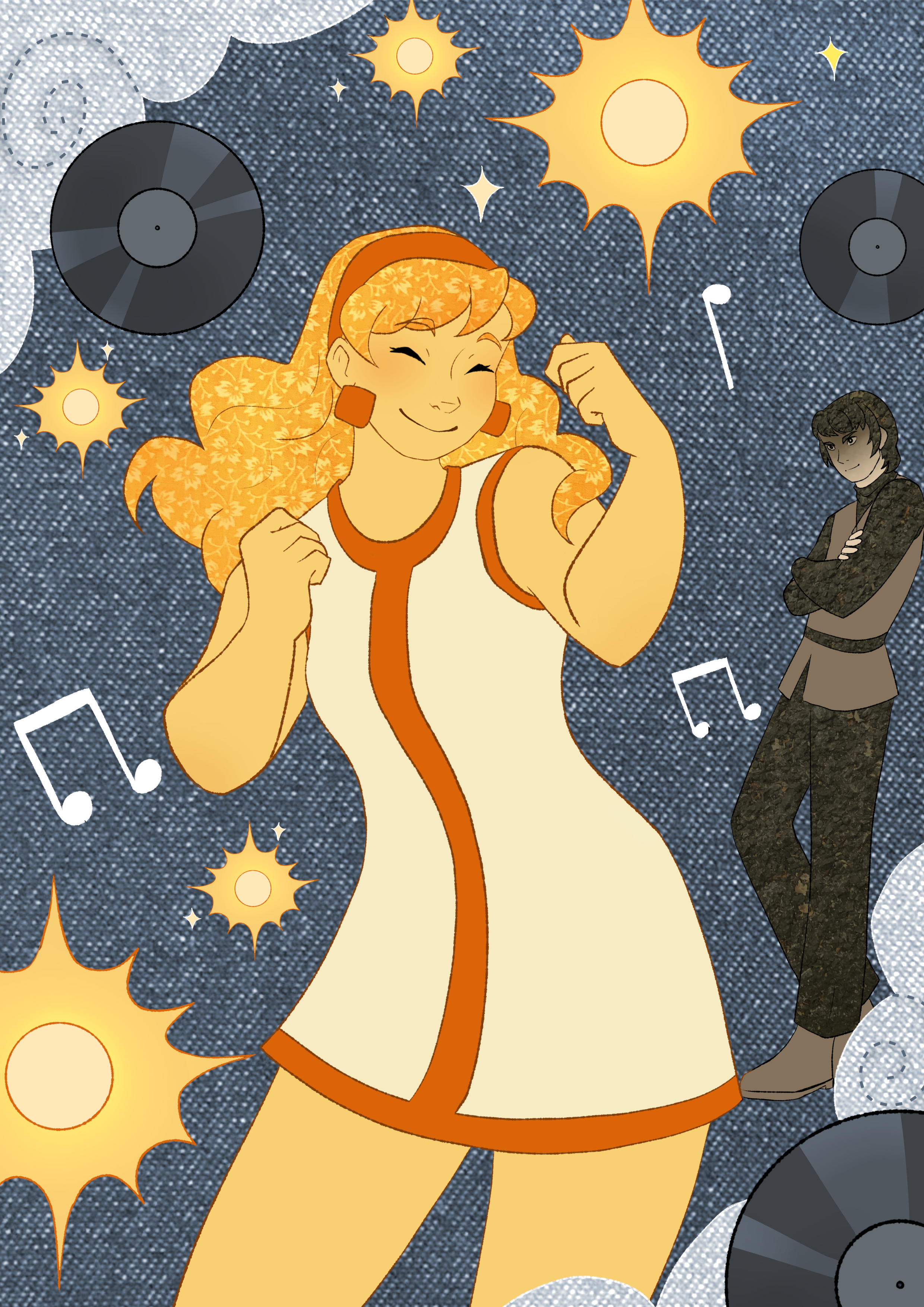
Panel 1: The 'Introduction' Panel. This panel is for introducing the character, Senna.
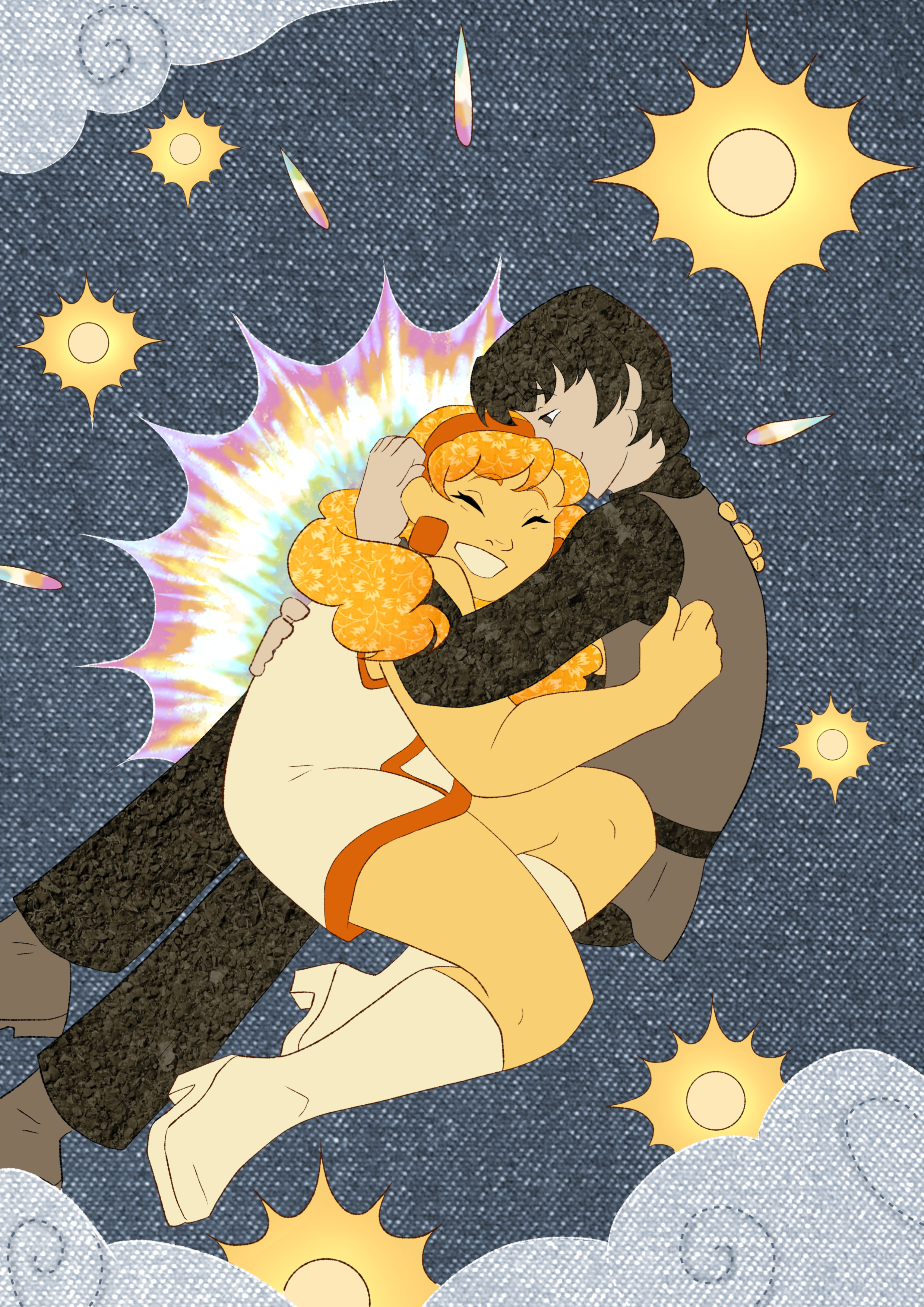
Panel 2: 'New Relationship' Panel. Showing how bright and happy an abusive relationship can be or feel at the start.
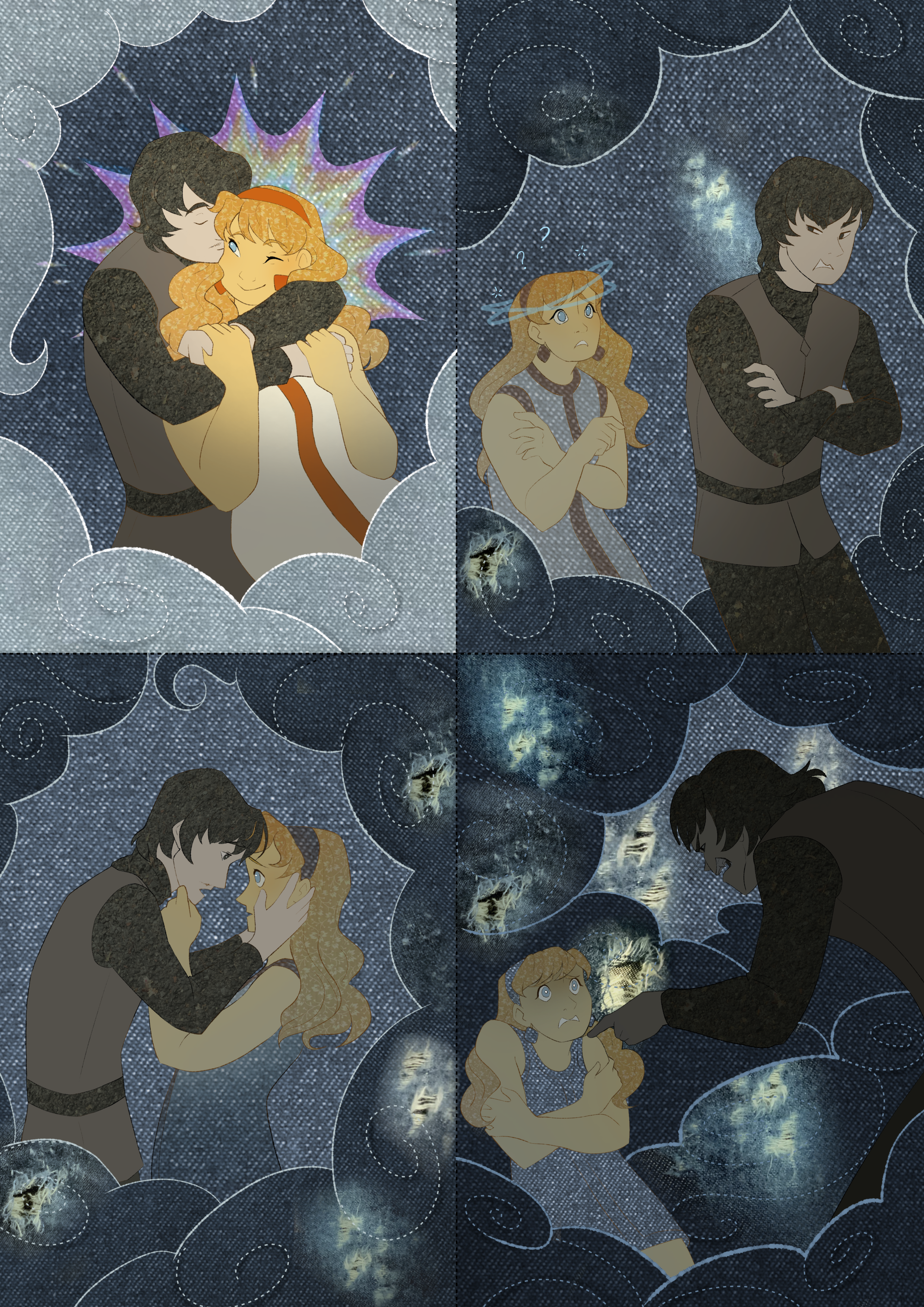
Panel 3: The 'Abuse Cycle' Panel. To show the abuse cycle. It’s designed to read clockwise in a circular way, as a visual cycle.
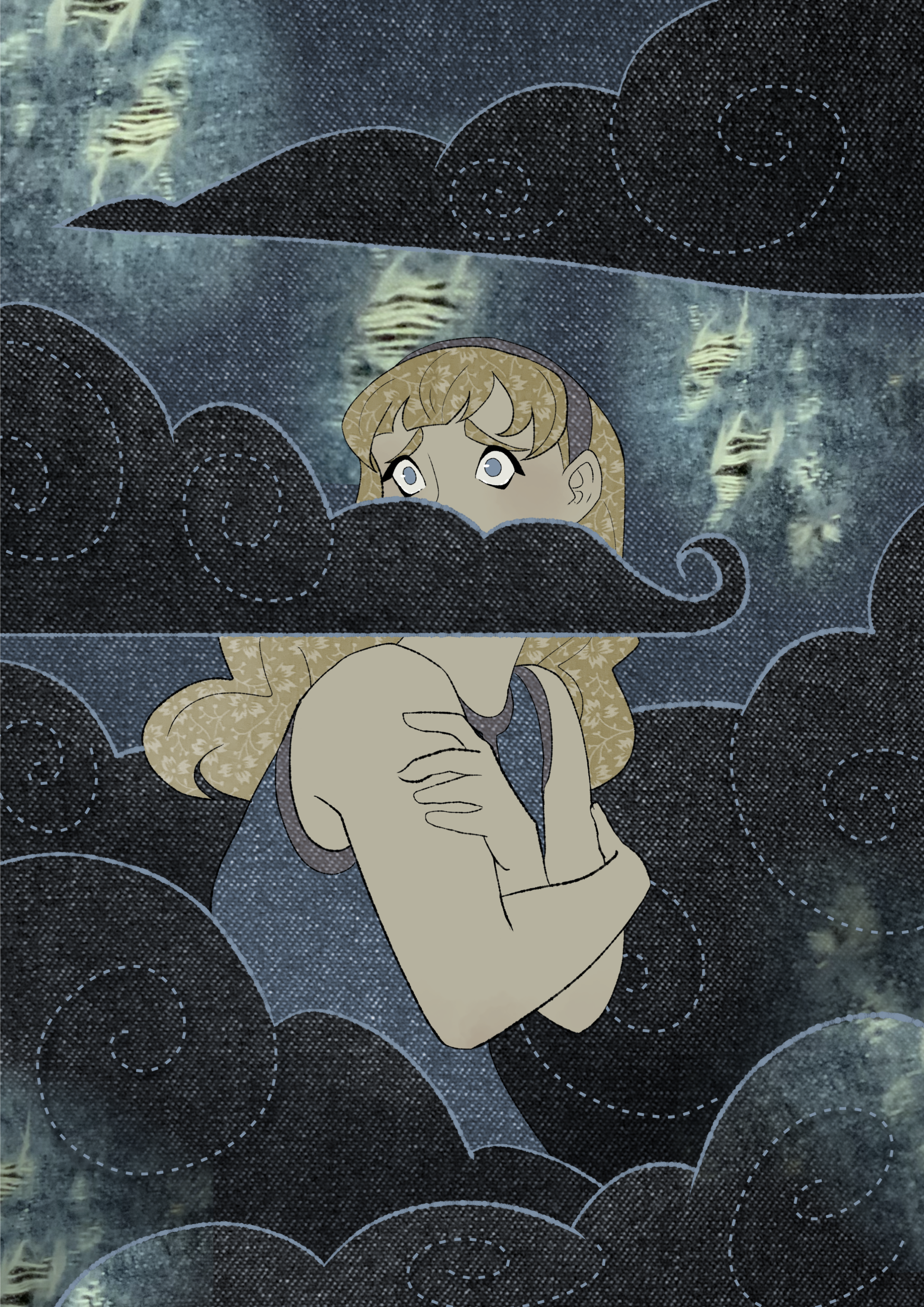
Panel 4: The 'Fog' Panel. To show the confusion and anxiety abuse cycles create in victims.
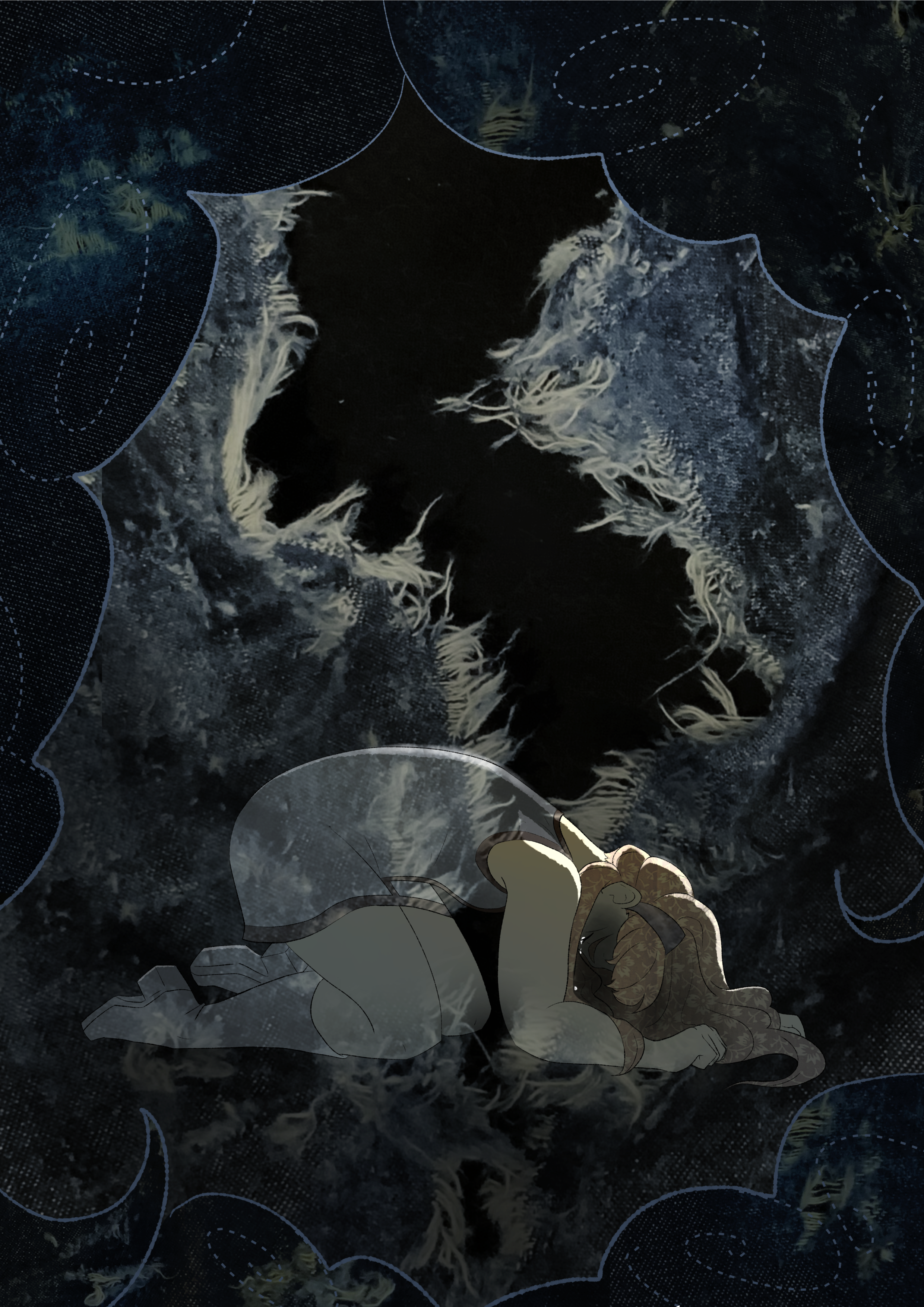
Panel 5: The 'Breaking Point' Panel. A representation of the breaking point, when the fear of staying is worse than the fear of leaving.
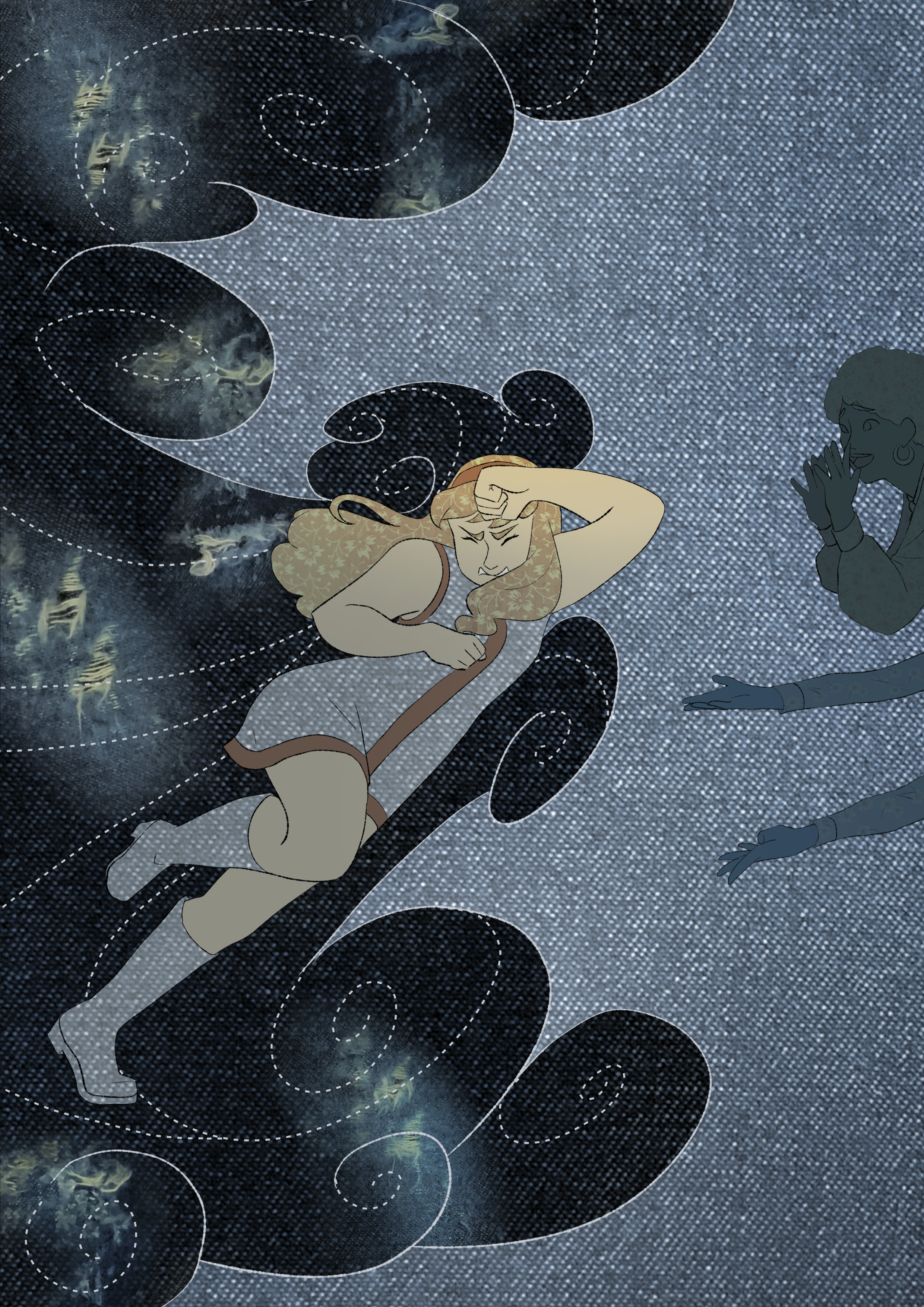
Panel 6: The 'Breakthrough' Panel. To visually show how scary and difficult it is to escape or leave abuse, and the influence of support.
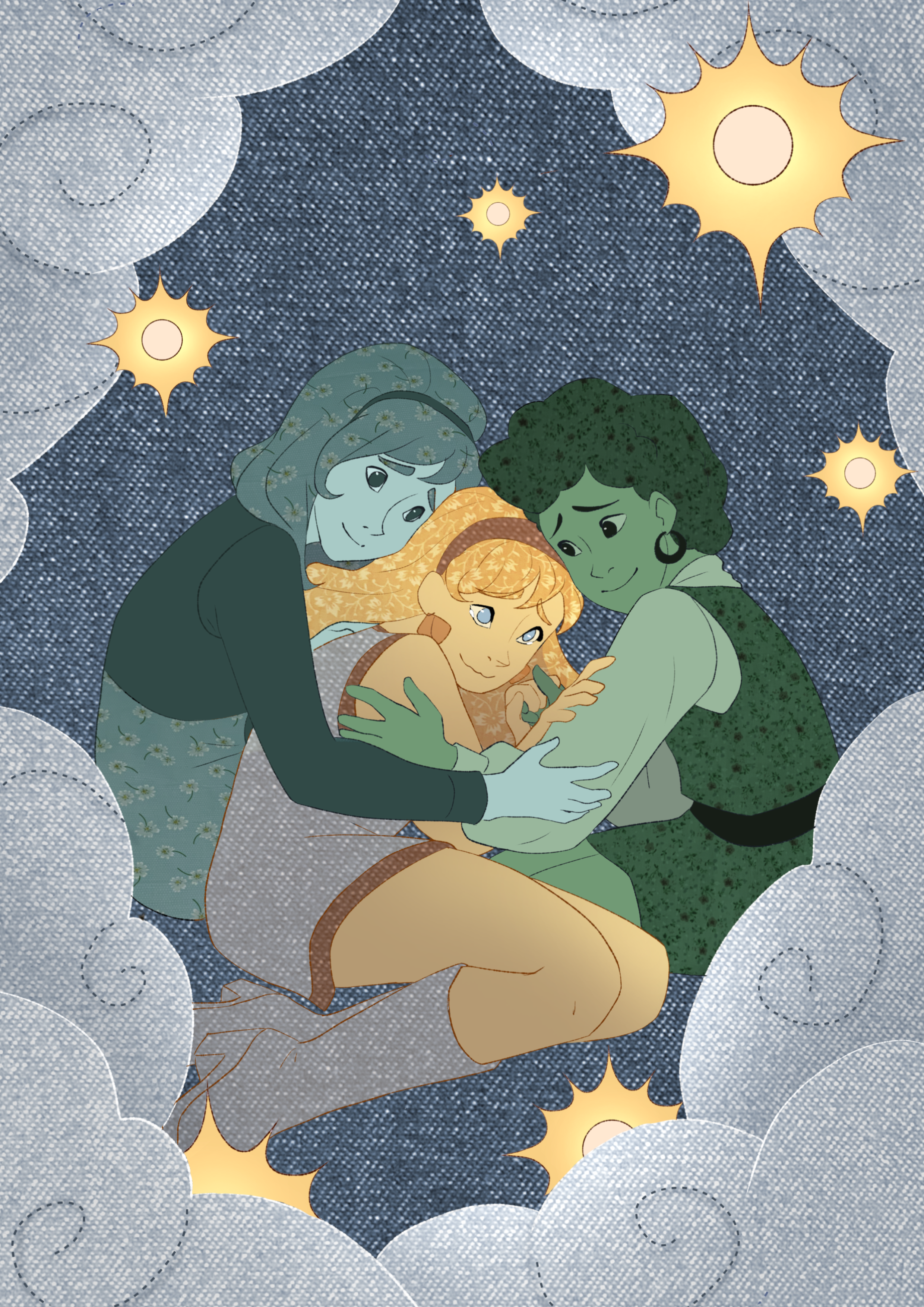
Panel 7: The 'Comfort' Panel. To visually show the importance of understanding, comfort and support for a victim who has left abuse.
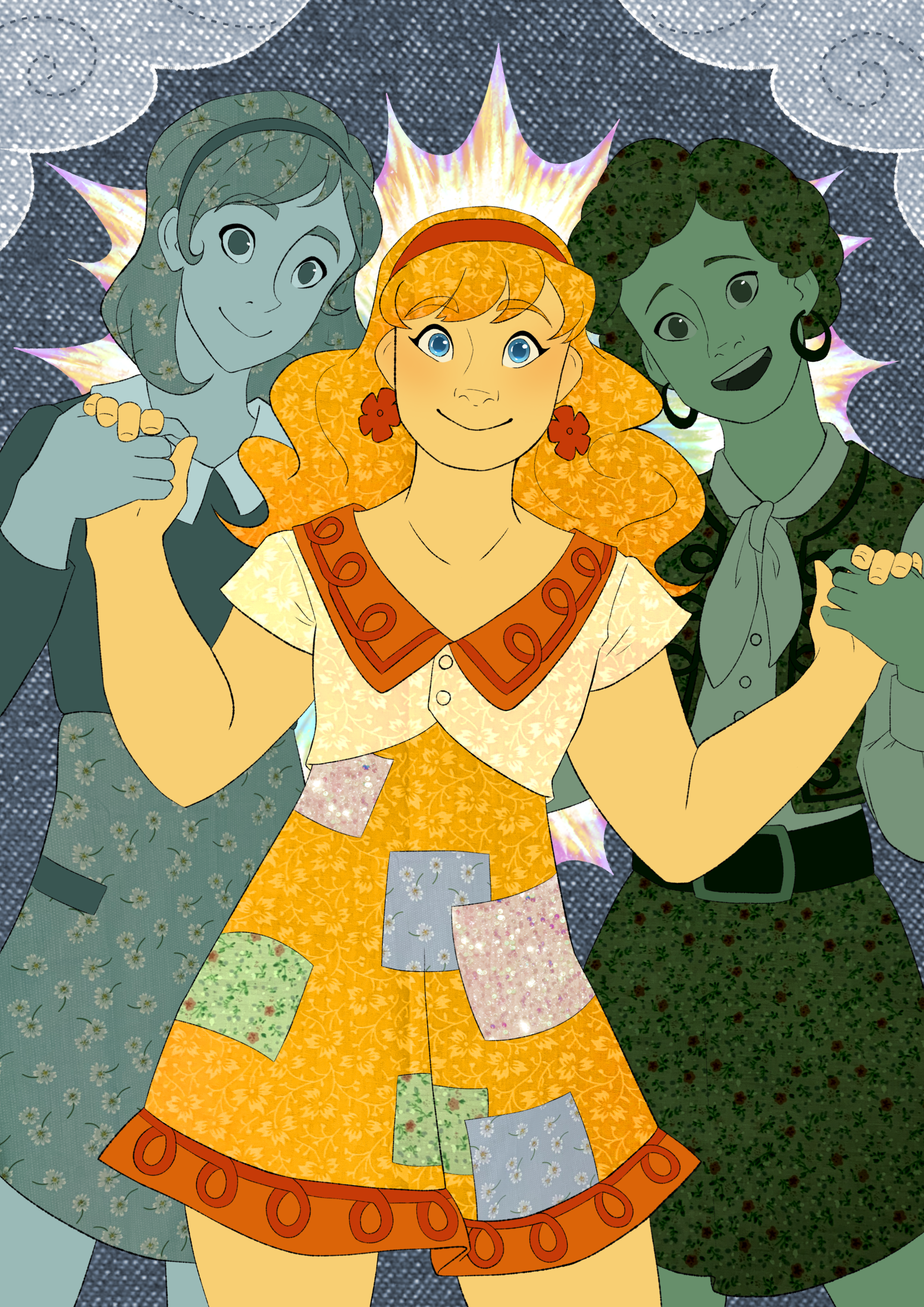
Panel 8: The 'Recovery' Panel. To visually show how a victim rebuilds their sense of self with expression and support.
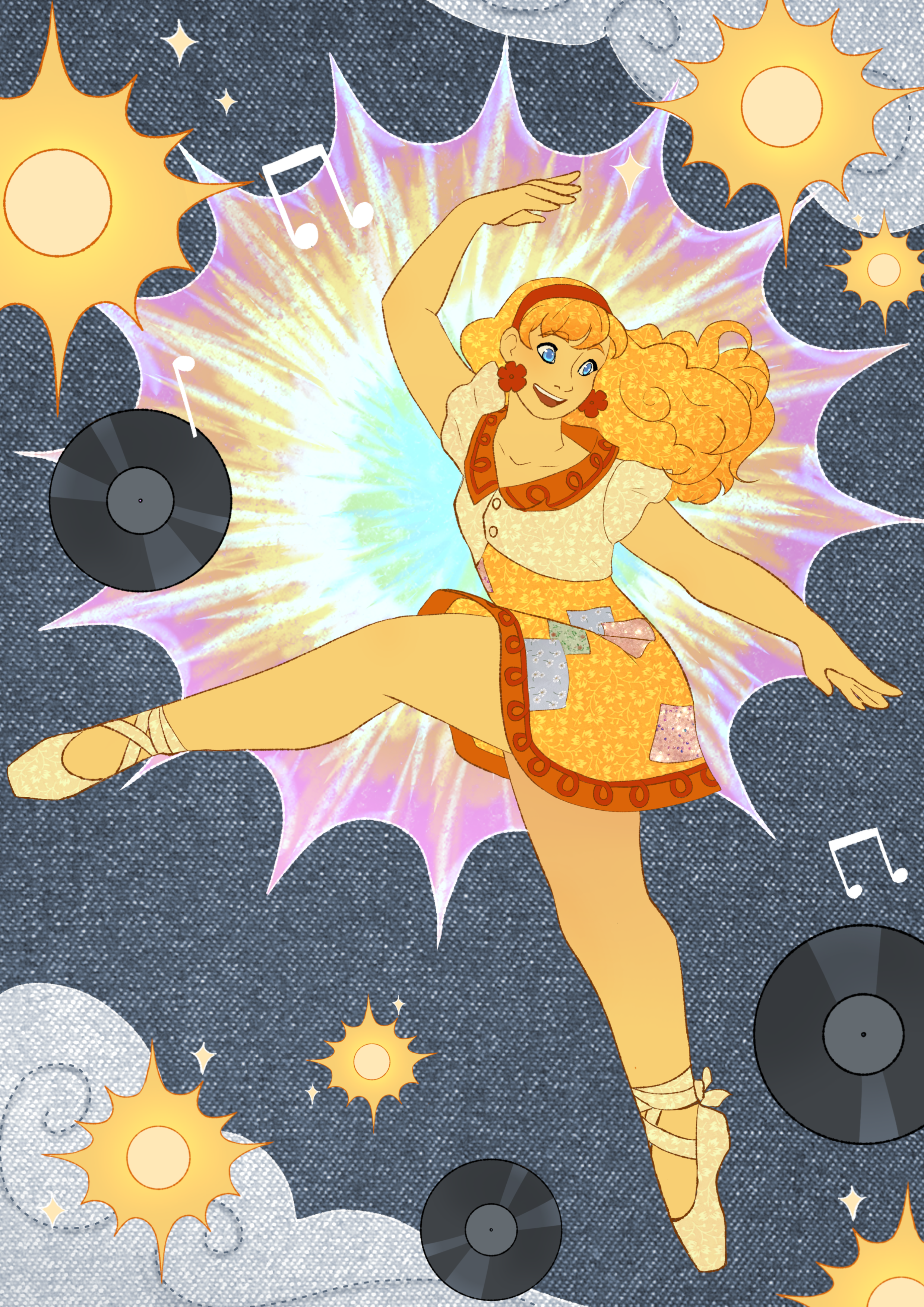
Panel 9: The 'After' Panel. To visually show recovery, confidence and expression.
More details about each panel
The smart stuff, explained.
Click on the images for a closer look.
Panel 1: The 'Introduction' Panel Panel purpose: This panel is for introducing the character. Details: Suns, music notes and vinyls surround the central character Senna. These are to show her personality visually. Her clouds are white and not in the way, just framing her. She’s dancing, and not seeing the future abuser lurking in the background. The abuser is in the background, blending more with the denim, watching for now. His texture is not fabric, but concrete, representing how concrete can be rough and damage denim.
Panel 2: 'New Relationship' Panel Panel purpose: Showing how bright and happy an abusive relationship (in this case, a romantic abusive relationship) can be or feel at the start, and how victims get hooked in. Details: Her suns are around her, more of them, but she’s less of a focus. She’s curled up in his arms in a sitting position that will be referenced in a later panel.
Panel 3: The 'Abuse Cycle' Panel Panel purpose: To show the abuse cycle. It’s designed to read clockwise in a circular way, as a visual cycle. Details: The abuser is always on the outside, keeping Senna pushed into the middle. The denim becomes more and more damaged the deeper into the worst parts of the cycle we get. It’s fine if read left to right, as it still gets the message across of constant instability. Each stage of the cycle is represented: the honeymoon phase (top left), tensions rising (top right), the blowup/incident/betrayal (bottom right), and reconciliation/’hoovering’ (bottom left.) The details of each illustrated stage are explored over the next 4 pages. The cycle is read clockwise, in the order: top left, top right, bottom right, bottom left. Then, from the bottom left section we loop back up (visually aided by the hook in the clouds, which literally hooks the visual path back upwards and into the swirls of the lighter clouds again, and back into the Honeymoon Phase, representing the cycle starting again. In the panel overall, we can see that Senna’s arms are now often close to her body and close to her chest, representing how she’s become less bold and expressive than she was before the start of the relationship. Even in her body language, she is becoming smaller, and her usual suns are gone. Her hair also becomes less curly when she’s unhappy, only regaining its curl when she’s happier.
Panel 4: The 'Fog' Panel Panel purpose: To show the confusion and anxiety abuse cycles create in victims. Details: The clouds are dark, and stretching into the panel, across the panel, engulfing Senna. One of the clouds is covering her mouth, representing how the confusion can disorientation in abuse silences victims. Senna’s arms are hugging her, and she’s hunched over. She’s lost colour, parts of her character design have almost entirely faded into the denim, and the denim is damaged in the background. Even the eyelashes on her eyes are downturned to emphasise sadness and a sense of being lost - similar to the feeling of being a child lost in a huge crowd- and the lower lashes near the corner are made heavier to emphasise how wide and scared Senna is. The clouds sometimes feature sharp ends (top cloud) and hooks (cloud over her mouth) showing how the abuse controls and directs her attention, searching for a sense of stability.
Panel 5: The 'Breaking Point' Panel Panel purpose: To serve as a visual representation of the breaking point - at which point the situation is beyond repair. This is partially to show how extreme these situations become before the victim leaves. Often, victims don’t leave because it’s dangerous, and often, victims only leave when the fear of staying is worse than the fear of leaving. Details: The ripped denim in the background is a continuum in the metaphor of damaged denim - now it’s gone from being damaged to being torn open completely. The tear strikes down through Senna’s chest where her heart and lungs would be, as a representation of how heartbreaking and suffocating abuse can be for victims. The position she’s in is also a reference to being ‘winded’ by sudden changes during abuse, and by how cruel parts of abuse can be. The denim in the background has now reached its most textured and 3D state, which is intended to be visually overwhelming for the style Senna is illustrated in originally. The denim is literally wrinkled to create a ‘lightning’ effect to reference themes of severity and intensity. Senna is keeled over as if she’s just collapsed, visibly exhausted and crying. Parts of her design are almost completely invisible, and she’s lost a significant amount of colour and even curl in her hair. Damaged denim is everywhere in the clouds around her, featuring hooks coming from below, a visual representation of how ‘underhanded’ and insidious abuse can be.
Panel 6: The 'Breakthrough' Panel Panel purpose: To visually show how scary and difficult it is to escape or leave abuse, and to show the influence of support. Details: Senna is bursting through the clouds, which are resistant and taking a lot of force and speed to get through. This is to represent how difficult it is to take the leap and leave abuse. Stitches streak along the clouds to represent the extra ‘binding’ to the cycle that Senna is fighting to leave. The clouds resemble how water behaves when something dives in, where the water follows the object as it travels deeper underwater. Following this visual reference, the clouds also billow around Senna in a looming, tentacle-like way, and curling back in, as if to keep Senna trapped - this was on purpose, and in reference to the threatening visuals seen in cartoon villains, and to further emphasise the difficulty of leaving abuse. Senna is covering her head and diving full-force through to show the determination and effort involved, with the visual being a literal ‘leap of faith’ mixed with the concept of a ‘trust fall’, as Senna has to trust the friends reaching out to her and encouraging her from the ‘other side’, where the denim is undamaged and almost jarringly plain, to show how strange the change in treatment can be for victims that leave.
Panel 7: The 'Comfort' Panel Panel purpose: To visually show the importance of understanding, comfort and support for a victim who has left abuse. Details: Sitting position is a callback to panel 2, the ‘New Relationship’ panel, where she’s sat in a similar position curled up in her future abuser’s arms. In this panel, she’s sitting in a similar way, but it’s a tragic comparison. She’s holding onto her friends for support, but she’s not as confident in being close any more - in the ‘New Relationship’ panel, she’s confident about leaning into the person holding her, but in this panel she’s exhausted, emotionally scarred and left hesitant and small - including the detail of her arms being closer to her than in the ‘New Relationship’ panel. She’s also more dull in colour, showing how much personality and identity was stripped from her.
Panel 8: The 'Recovery' Panel Panel purpose: To visually show how a victim rebuilds their sense of self. Often, a reinvention of visual identity is helpful and is a result of the victim starting to feel confident expressing themselves again, and this can be most evident in fashion. It also visually shows how support from a support network can help with this - represented by the coloured patchwork now incorporated in Senna’s redesign. Details: The patchwork in Senna’s dress is the same colour and fabric pattern from her friends’ designs, made lighter to fit her colours. Senna’s redesign doesn’t just borrow fabric from her friends - there is also new sequin fabric of her own to show extra ‘sparkle’ (both visually and a metaphor for her ‘getting her spark/sparkle back’), and the loops in her collar and dress trim are borrowed from her friend’s design (to the right). The collar elements are also borrowed from her other friend (to the left) The flower earrings are symbolic, both referencing her friend’s materials and the concept of ‘blooming’ back into herself. It’s also a more bold shape and statement than the square earrings were at the start, while still referencing them. This also references the reclamation of femininity, which victims often report having lost during abuse. Her redesign overall embraces a more feminine look while still referencing 60s fashion, and elements such as the skirt and sleeves flare out more, showing her taking up more space even in little ways and being more confident to ‘be’ and express herself, even in little ways. I kept elements of her design recognisable to her design at the start - her iconic stripes on her dress are kept in the orange collar and the orange skirt trim, and the large earrings and headband survived the change (though the earring shape was changed to flowers). Senna’s friends are coloured blue and green, and are kept darker to ensure Senna stands out. Behind Senna is the colourful ‘sunburst’, referencing the comeback of her sun imagery and her happiness.
Panel 9: The 'After' Panel Panel purpose: To visually show recovery, confidence and expression. Details: Senna’s dancing position is a callback to the ‘Introduction’ panel, but this time, instead of being a tragic comparison like in previous panels 2 and 7, it’s a positive comparison. In this frame, not only has Senna had her big redesign, but her dancing position is both more specialised (Ballet) and more expressive, with more energy and visual movement implied. Her growing love for dance is also part of the intent behind her redesign, in which her skirt and sleeves were made more flowy to allow for more movement, and emphasis of movement. Suns, music and vinyls make a comeback more intensely than ever, including her sunburst, which is bigger than it’s ever been. The clouds around her are more welcoming and include elegant, swirling stitching to keep in the theme of dance and femininity. Furthermore, in a expansion to her redesign, the fabric pattern from her hair is not only in her cardigan and dress, but also in a new pair of ballet shoes, showing a reclamation of identity, compared to her starting design when she only had her fabric pattern in her hair.